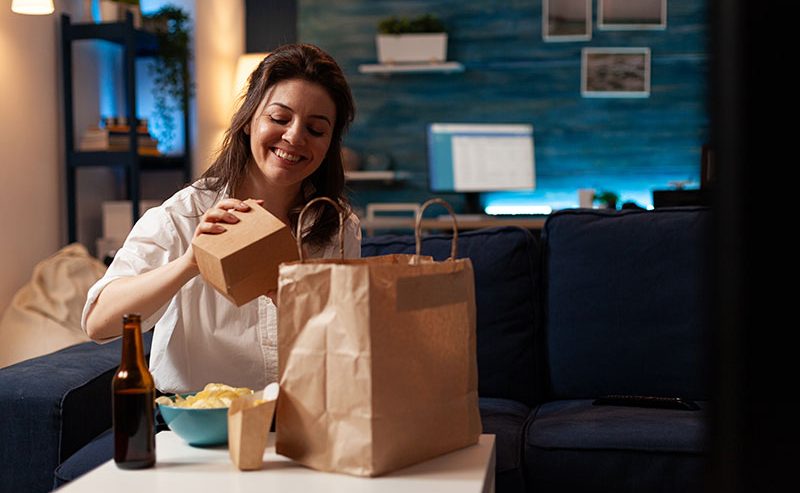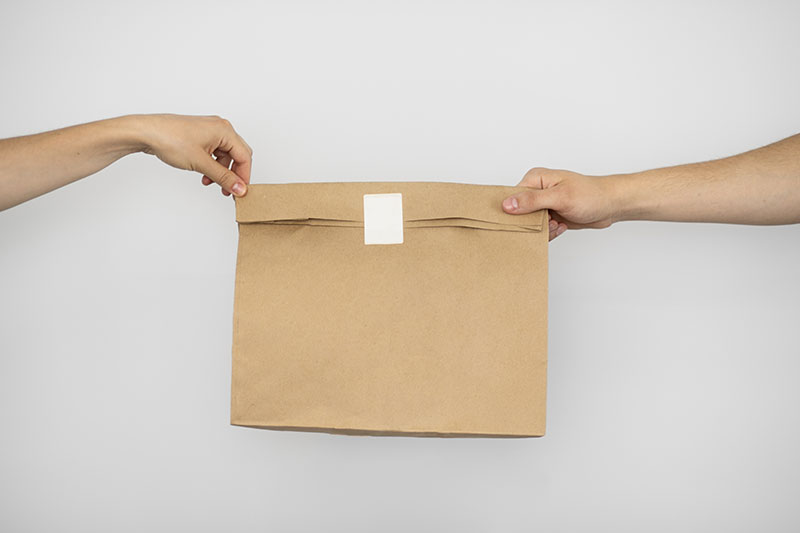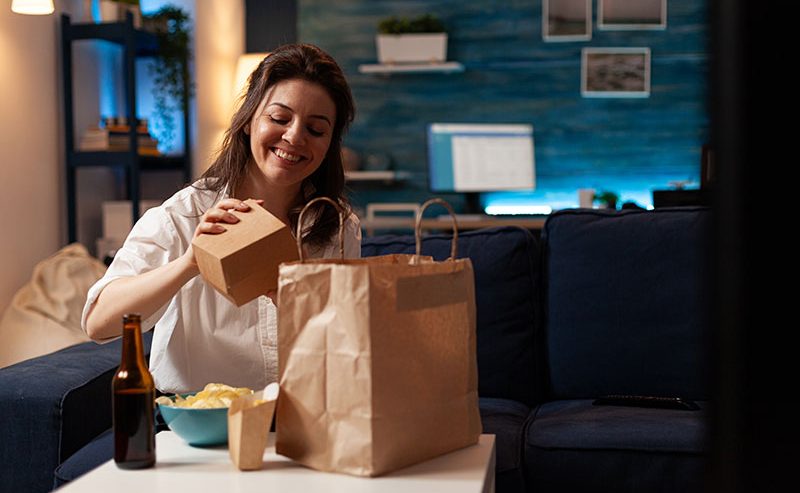Food delivery trends for 2023
In recent years, the food delivery segment grew rapidly in response to the change in consumer behavior, which began to show more and more interest in this commodity.
In 2021, still feeling the impact of the pandemic, the online food delivery market value reached US$23.4 billion, with expectations to grow to US$42.6 billion by 2027.
In this scenario, 2022 saw the expansion and maturation of the sector and, for 2023, there are new opportunities and trends on the horizon.

Current scenario of food delivery
The last few years have brought many innovative trends for food delivery, especially after COVID-19.
According to Grand View Research the food delivery market had an impressive global market size of $354.28 billion in 2022. What’s even more amazing is the projected growth of over 25% per year, which is expected to reach a difficult-to-fathom $2.15 trillion in 2030.
Consumers who were not yet in the habit of ordering food at home, were finally overcome by necessity during the quarantine.
This generated an unprecedented boom in food delivery, which continues to this day.
Interestingly enough, while meal delivery increased at a higher rate during the pandemic, it’s actually grocery delivery that will grow more rapidly in the coming years, reaching two-thirds of all food deliveries by 2030.
Due to this rapid growth, 2022 has seen the expansion of prominent food delivery trends, with the biggest highlights being:
Third-Party delivery services
Outsourcing the delivery service is still one of the main food delivery trends.
To handle the demand, restaurants, grocery stores and even supermarket chains started to close partnerships with several third-party delivery services.
This brings advantages to the establishment, such as being free from employment relationships, having no vehicle-related costs and being able to count on a larger base of couriers.
On the other hand, the food supplier loses control of delivery operations and customer experience, having to entrust the image of your company and the integrity of the product sold to a third party.
To mitigate this risk, many companies are using their own apps to manage customer orders and food delivery, relying on a base of experienced couriers.
Grocery delivery
Online shopping in supermarkets and grocery stores with home delivery became one of the realities of food delivery during the pandemic.
In the beginning, many supermarkets relied heavily on third parties for delivery fulfillment. Now, with this trend continuing, the big chains are looking for ways to scale their delivery operations internally to capture a broader customer base and retain more profit.
When we talk about smaller players, such as grocery stores and mini markets, the biggest problem was to carry out a digital transformation that would provide a good online shopping experience and help in the delivery management.
However, the technological market also brought its innovations, and through applications such as Delivery 365, companies of any size gained the opportunity to create their virtual catalog and automate order submission.
– Understand the advantages of delivery for your company
Delivery of lunch boxes
Lunch box delivery is another of the significant food delivery trends that gained momentum during the pandemic.
With restaurants closed, the option adopted by many people who are not used to cooking at home was to buy ready-made lunch boxes and have them delivered to their homes.
More balanced meals at a lower cost, this is a great option for those who have a busy life and are looking for convenient, balanced and economical meals.
Preparing lunch boxes has also become an excellent business option and has saved many entrepreneurs from seeing their restaurants go bankrupt.
New trends in food delivery
As we saw above, the food delivery market has grown and turned several trends in the sector into reality in recent years.
Now, in a more mature scenario, it’s time to look closely at the new trends that 2023 and the next few years bring.
‘Stacked’ deliveries
A recent trend is “stacked” deliveries, a term used when multiple deliveries are “stacked” to generate more efficiency for both drivers and consumers. For example, the same driver picks up orders from the same customer at multiple locations, such as a grocery store, laundry, and restaurant.
“Stacked” deliveries are more efficient for companies when the driver can serve several customers who live nearby, in the same neighborhood or building, for example.
Big players such as Uber Eats are already exploring how “stacked” deliveries will work in their business model.
– What types of businesses can use delivery apps?
Dark Kitchens
Dark kitchens or ghost kitchens might sound like a rather macabre idea, but they are anything but.
The famous dark kitchens are nothing more than an extra branch of a restaurant, marketing and producing orders for delivery under the brand of a restaurant, but without dealing directly with the public.
Without having the need for a space to accommodate customers and serve meals, these branches allow restaurants to expand their business with minimal investment risk compared to opening a new store.
– Dark kitchens: get to know this delivery trend
Subscription delivery services
Trend in various retail sectors, the subscription model now comes to food delivery.
Supermarkets and other establishments that work with food and drink, such as a wine shop, for example, are already offering subscription-based memberships with special prices and reduced delivery fees for their customers.
In addition to ensuring a recurring income for the establishment, this helps build customer loyalty who have their needs met while benefiting from the special conditions of a signature club.
A delivery can organize special menus for those who are subscribers, delivering something different every week to the person’s home.
Drones
Although this still seems to be a trend that is quite distant from the reality, we have to keep it on the radar, because the future is just around the corner.
The global market for drone delivery services was valued at U$322.2 million in 2022 and grew at a CAGR of 33.0% from 2022-2032, being valued at over $5 billion.
However, like any other trend in food delivery, there are advantages and disadvantages.
While drones can help solve some last mile delivery, speeding up shipping (since they don’t have to stop to rest) and lowering driver costs, there’s still a lot of work to be done before they get packages to your doorstep seamlessly.
Return deliveries safe for landing, protected against hackers or malfunctions and within the regulations of each country, presents considerable challenges for anyone who works with this technology.
Still, progress in this area continues to be made by companies like Amazon, and we could soon see some little robots flying around carrying packages.
Own delivery service
One of the most exciting food delivery trends revolves around in-house delivery services.
To guarantee the quality of delivery for their customers, many restaurants are taking the reins of this entire process, starting with the investment in delivery management software and formation of a team of drivers.
A first step in that direction is certainly to automate the logistics operation as much as possible, receiving orders and delegating their delivery to a professional without having to stop to call someone, for example.
Thanks to apps like Delivery 365, this is already a reality within reach of any company.
Is your e-commerce ready for what comes next?

The list of food delivery trends is renewed every year, but they all have one thing in common: satisfying customer demand for convenient, practical and safe ways to access food.
As this market continues to grow, competition and costs are putting pressure on food delivery providers to be more efficient and provide better service.
Optimization of delivery routes will become increasingly important, as will delivery management software to automate and streamline the entire logistical process.
Delivery365 app is the ideal solution for any segment, whether retail or services, that wants to create their business online and offer quick customer service.
– How to create a service delivery
Every time someone makes a purchase at your establishment, couriers registered in the application are notified, streamlining the entire delivery process without you having to worry about contacting someone personally.
Developed with an intuitive interface, so that anyone can use it even without understanding anything about technology, the Delivery365 is the ideal solution for any business.
With a base of thousands of couriers qualified to take your products to customers anywhere, at any time, it is a true revolution in the way of delivering.
Visit our site and learn more!


